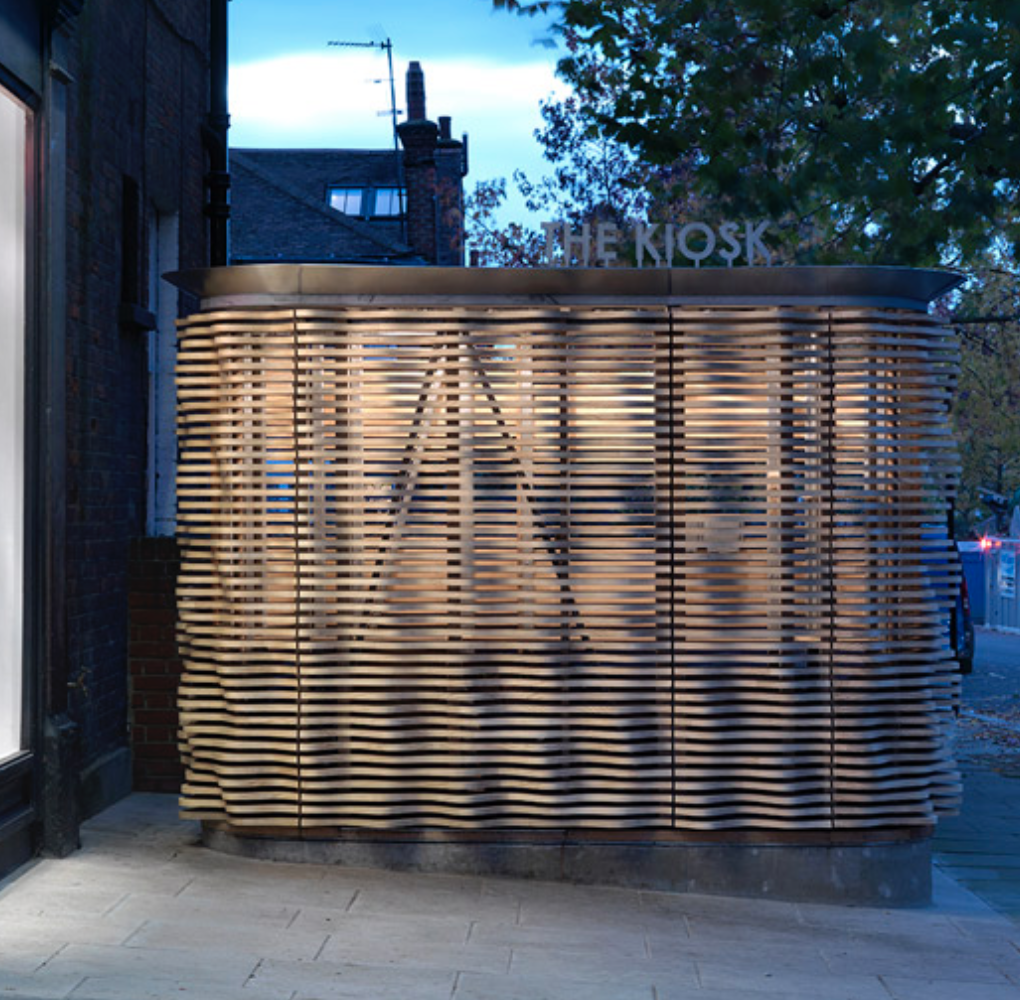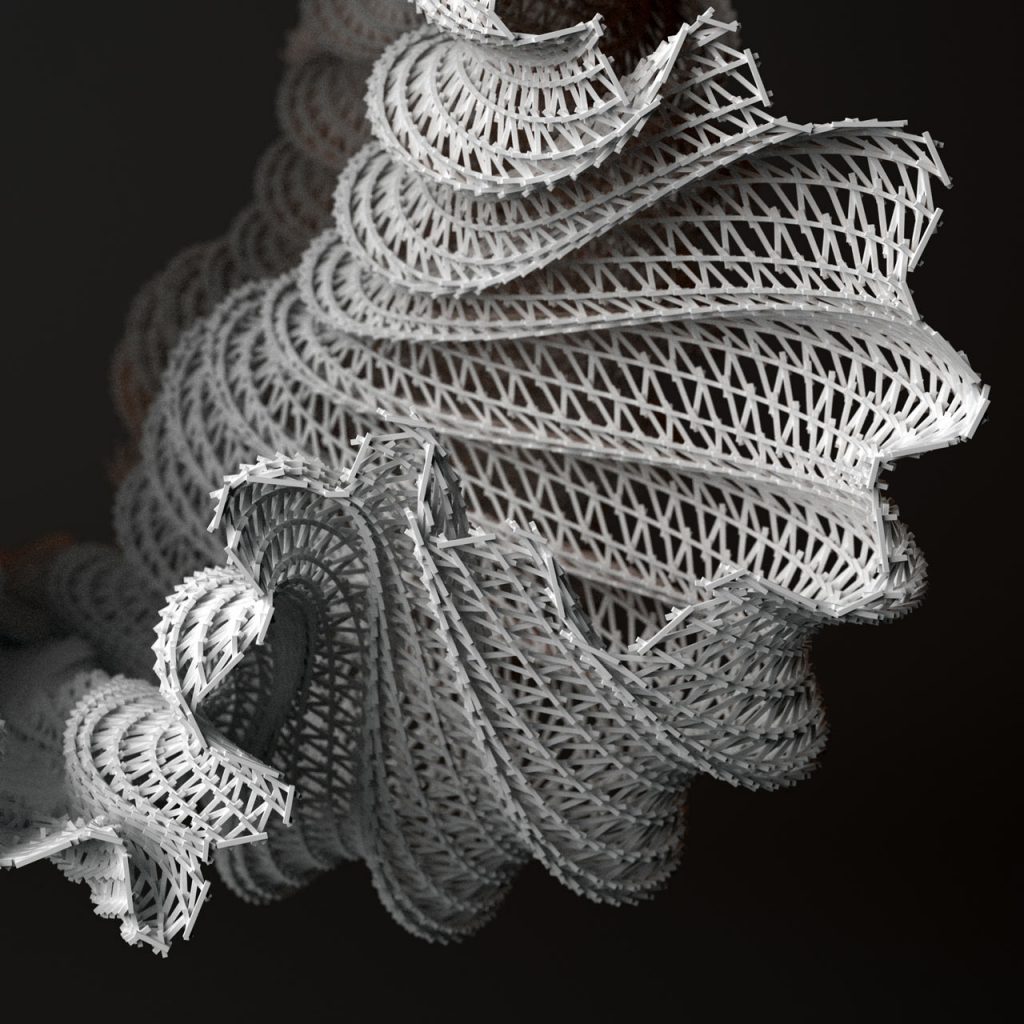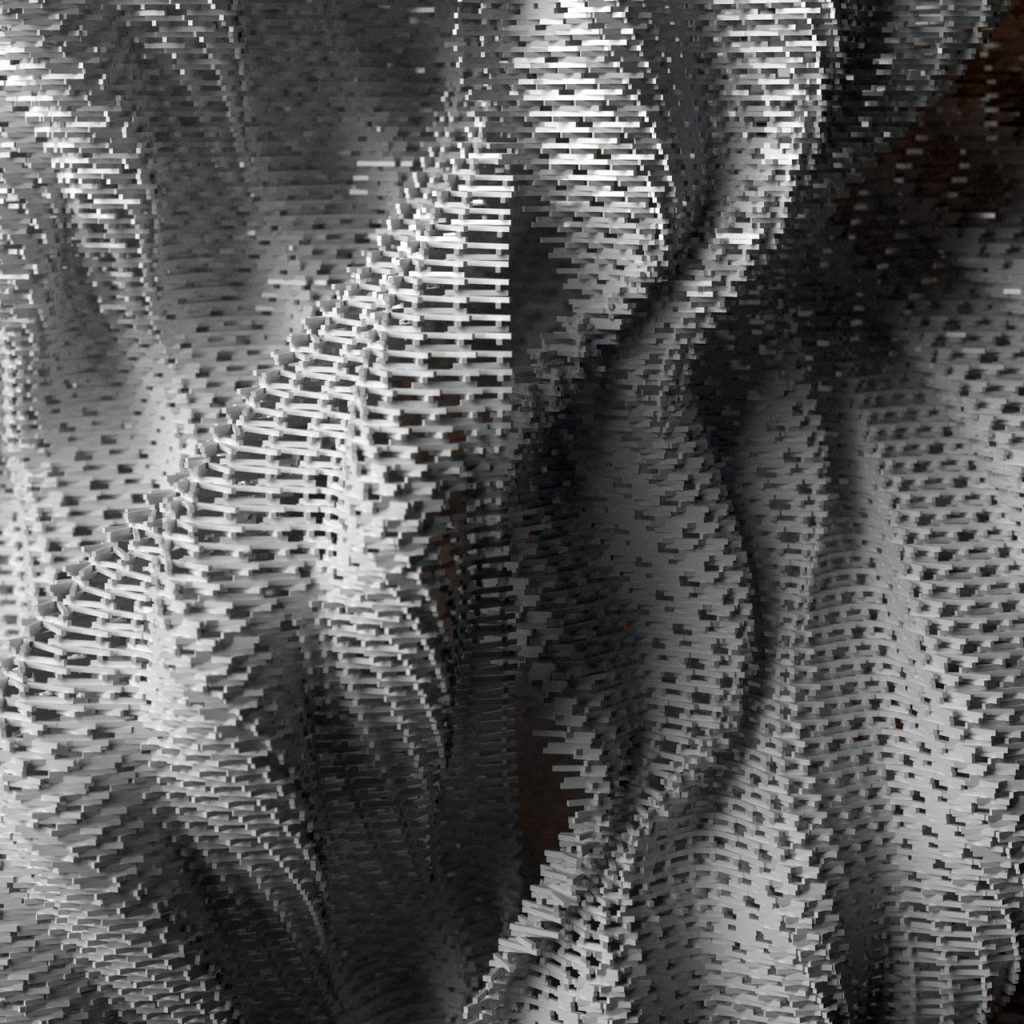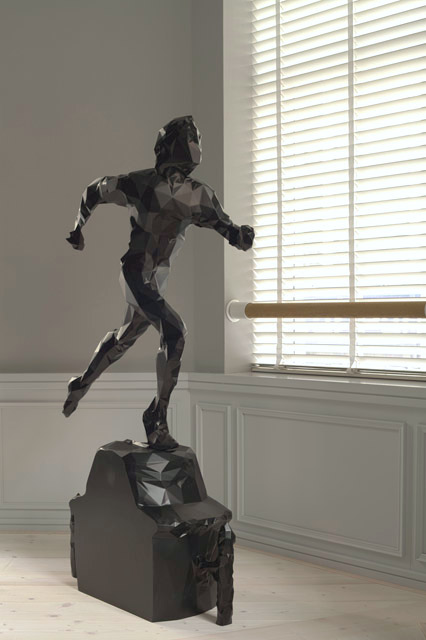The project I chose for this blog is a KUKA robotic arm parametric cuboid grid fabrication. Posted to the journal for the Institute for advanced architecture of Catalonia, this project utilizes KUKA robotic arm technology to build a wooden grid with variable density out of wooden battens and pins. Modules for the grid can be assembled (cutting, drilling, positioning) entirely by the robot arm. Modules with varying programmed densities can be connected together to complete complex structures. I like this project because of the simplistic method it uses to create structures. By programming the KUKA arm to your own personal parameters, an infinite number of structures can be built and used for the construction of art, architecture, models, etc. As shown in the attached image, the robot arm is able to build grids with complex densities while using a singular building strategy by altering the lengths of the battens and the space between connections.
ROBOTIC FABRICATION – CUBOID GRID
INSTITUTE FOR ADVANCED ARCHITECTURE OF CATALONIA, BARCELONA
MARCH 29, 2016

“Speculating on the final form shows how density can be controlled throughout the structure.”
![[OLD SEMESTER] 15-104 • Introduction to Computing for Creative Practice](../../../../wp-content/uploads/2023/09/stop-banner.png)







